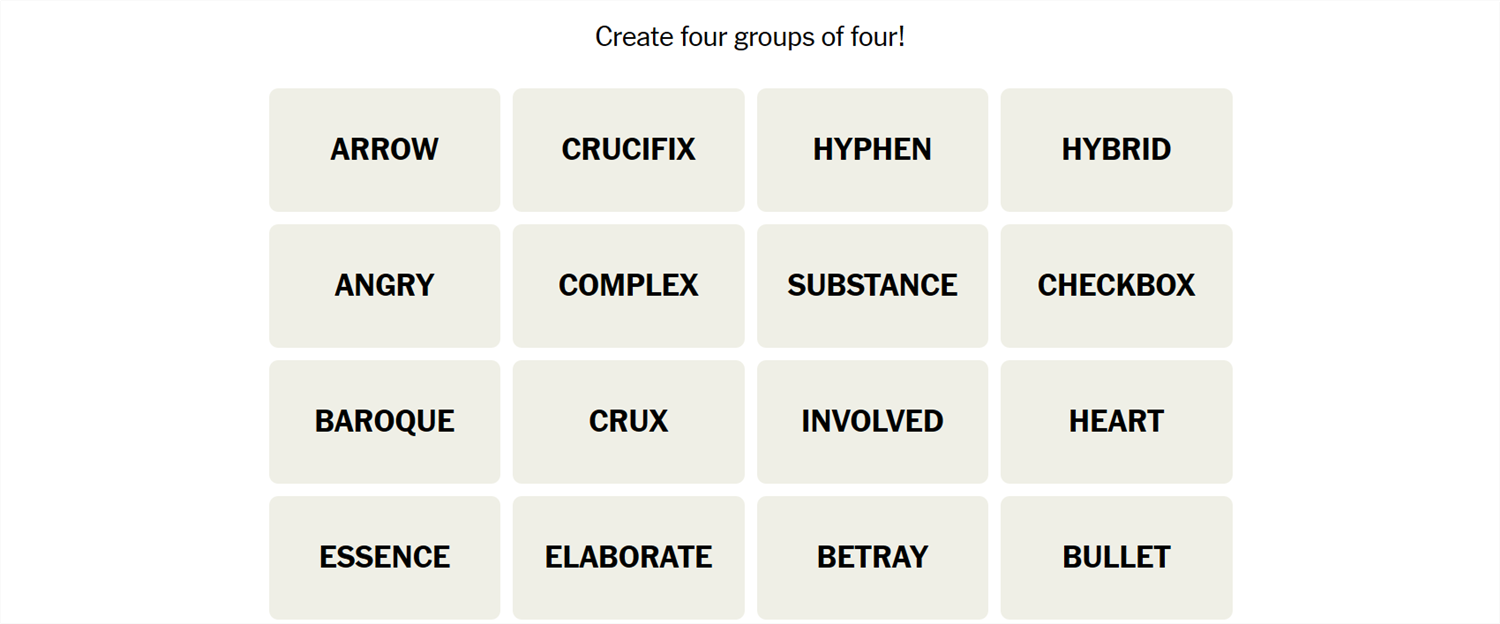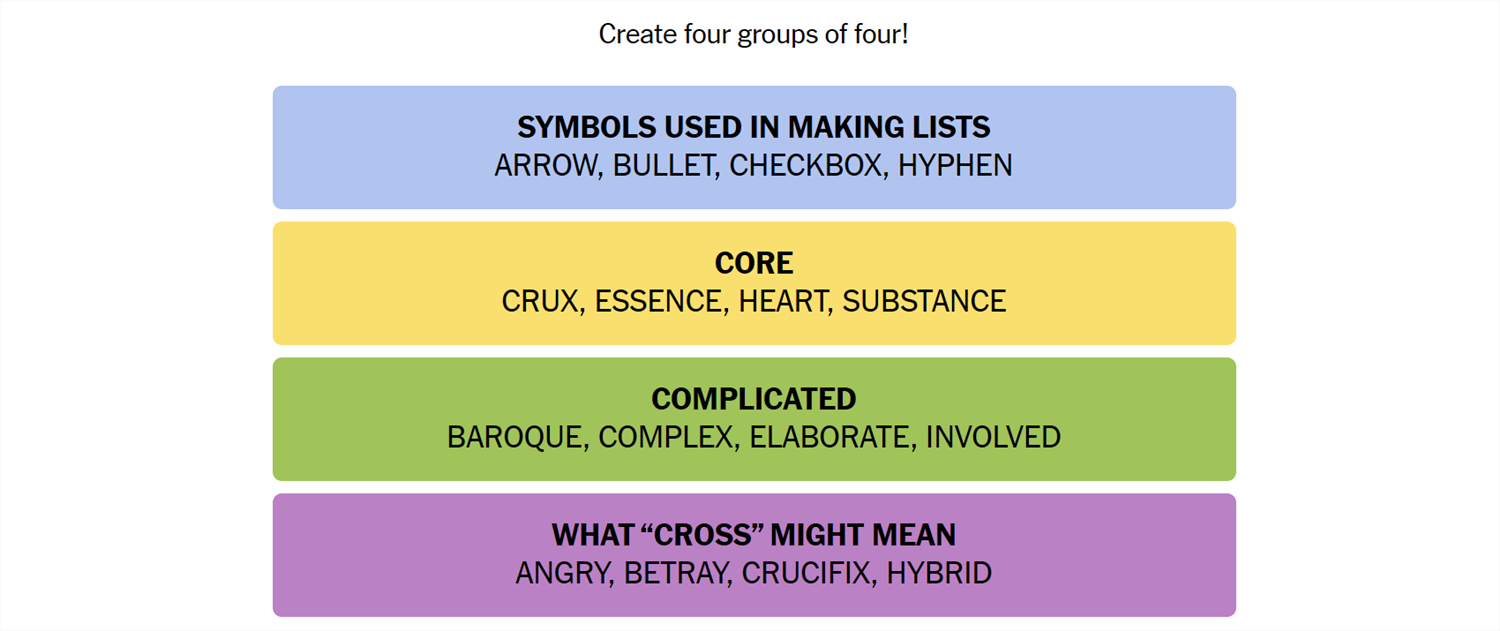
Daily New York Times Puzzle Answers Revealed on June 10 | Challenge

Daily New York Times Puzzle Answers Revealed on June 10 | Challenge #365 Unlocked
Quick Links
- What Is Connections?
- Hints for Today’s Connections Groups
- Today’s NYT Connections Answers
- How Did We Solve This Connections Game?
- How Do You Guess Connections Groups?
Connections is a game from the New York Times that challenges you to find the association between words. It sounds easy, but it isn’t—Connections categories can be almost anything, and they’re usually quite specific. If you need a hand getting the answers, we’ve got you covered.
What Is Connections?
Connections is a game from the New York Times. The objective is simple: sort 16 words into groups of 4. Each group of words will be connected by some common idea or theme. That common element could be anything. We have seen everything from games that rely on the number of letters in the words to categories that require you to spot an extra letter at the end of the word. Sometimes they’re references to economics, other times they reference fairy tales. There is no telling what sort of association there will be between words.
Once you’re confident you understand the connection, select 4 words, then hit “Submit.” You have only four attempts in total, so don’t be too guess-happy.
Hints for Today’s Connections Groups
Here are a few hints for the 365th Connections game to get you started:
- Yellow: Center.
- Green: Difficult to understand.
- Blue: For when you need to get things done in order.
- Purple: All possible synonyms for one word.

If you still need help, the actual group names are:
- Yellow: Core
- Green: Complicated
- Blue: Symbols Used in Making Lists
- Purple: What “Cross” Might Mean

Core (Yellow):
Crux, Essense, Heart, Substance
Complicated (Green):
Baroque, Complex, Elaborate, Involved
Symbols Used in Making Lists (Blue):
Arrow, Bullet, Checkbox, Hyphen
What “Cross” Might Mean (Purple):
Angry, Betray, Crucifix, Hybrid
How Did We Solve This Connections Game?
June 10th had one group that I found pretty challenging, but it wasn’t too bad on the whole.
The first word I started with was bullet, and since I’d just been working on a to-do list for the upcoming week, my brain instantly went to “symbols for lists” Checkbox, arrow, and hyphen are all also symbols used to make lists. My guess was very close—Blue’s actual group name was “Symbols Used in Making Lists.”
Next, I looked at crux. Crux isn’t an extremely common word, but it is unambiguous: it means “The central point of an issue.” From there, it was easy to pick up essence, heart, and substance to round out the Yellow group, which was “Core.”
Complex and elaborate are pretty obvious synonyms, so I started looking for other words that deal with the idea that something is complicated. Involved seemed like a good pick (as in, “an involved plan”), and baroque, while not usually used to mean complicated, can be used in that way. Green was just “Complicated.”
That left angry, betray, crucifix, and hyrbid. It took me longer than it should have to figure it out, and it wasn’t until I started mentally listing synonyms for crucifix that I realized all the words in the Purple group could be synonyms for cross. Purple was properly called “What Cross Might Mean.”
How Do You Guess Connections Groups?
There is no quick, reliable way to approach Connections like there is with Wordle, since Connections isn’t algorithmic. However, there are a few things to keep in mind that can help.
- Look for similar parts of speech. Are some words verbs and others nouns? Are some adjectives? Try mentally grouping them based on those categories and see if any other patterns jump out at you.
- Are the words synonyms? Sometimes categories will just be synonyms for a phrase, or very close to synonyms. Don’t rely too closely on this, though. Occasionally, Connections will deliberately throw in words that are sometimes synonyms to mislead you.
- Try saying the words. Sometimes, saying the words helps. One puzzle we saw included the words go, rate, faster, clip, pace, speed, move, commute, and hurry—all of which are obviously related to the idea of motion. However, when you say them, it becomes a little more obvious that only four (go, move, hurry, faster) are things you’d actually say to prompt someone to get moving.
- Expect the red herring . Connections usually has words that could be plausibly, yet incorrectly, grouped together. Take the words Bud, Corona, and Light, as an example. You might instinctively see those three words together and assume they’re lumped together in a category related to beer—but they weren’t.
- Look for distinct words. If a word on your board doesn’t have multiple meanings or can really only be used in one context, try using that word as the basis for a category.
- Shuffle the board. Sometimes, moving words around will help you look at them in new ways.
If you didn’t solve this one, don’t feel too bad—there’s always tomorrow! And those words may align with a topic you’re interested in, giving you a leg up on the competition.
- Title: Daily New York Times Puzzle Answers Revealed on June 10 | Challenge
- Author: Nova
- Created at : 2024-08-30 01:05:37
- Updated at : 2024-08-31 01:05:37
- Link: https://blog-min.techidaily.com/daily-new-york-times-puzzle-answers-revealed-on-june-10-challenge-365-unlocked/
- License: This work is licensed under CC BY-NC-SA 4.0.



